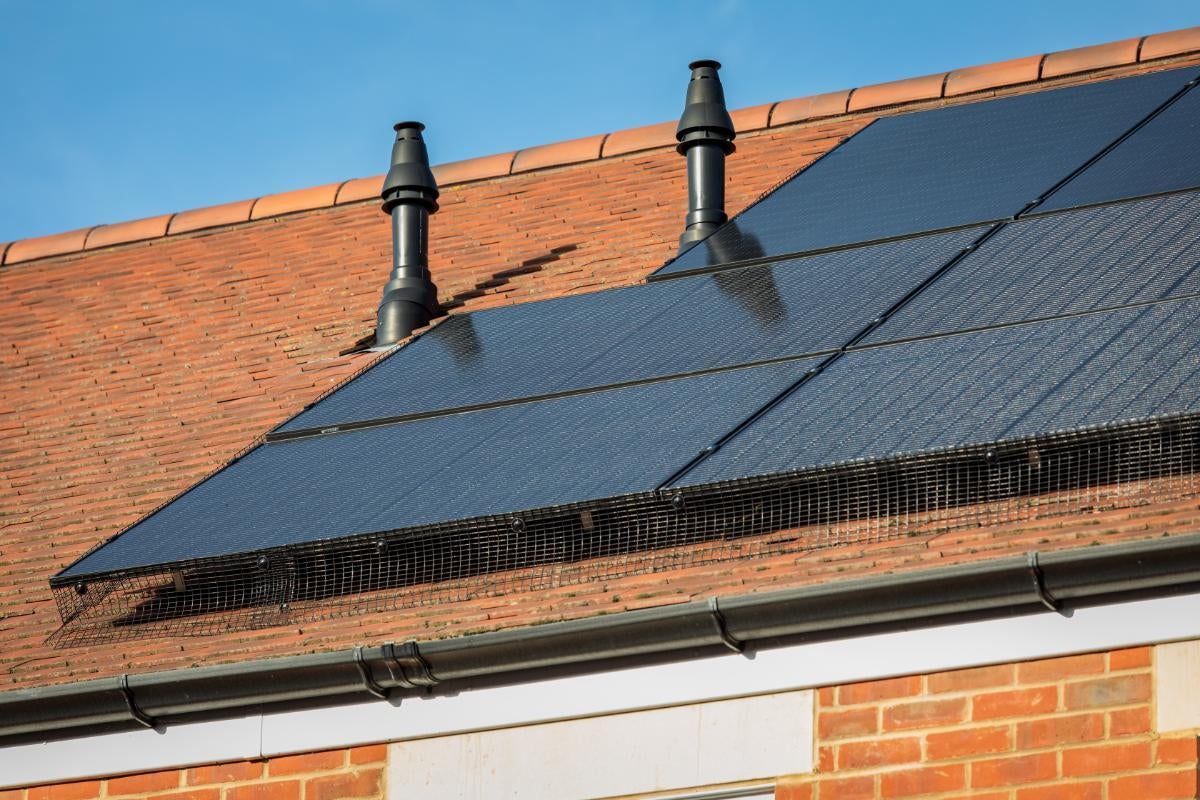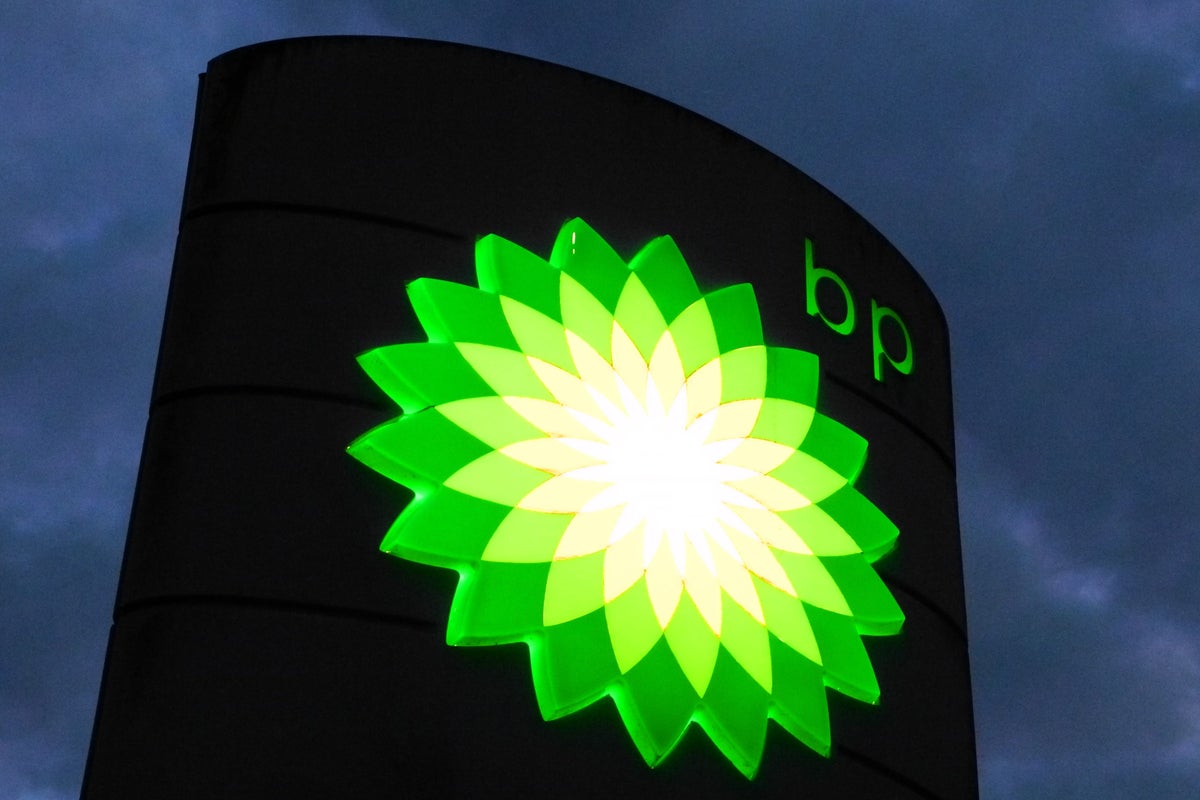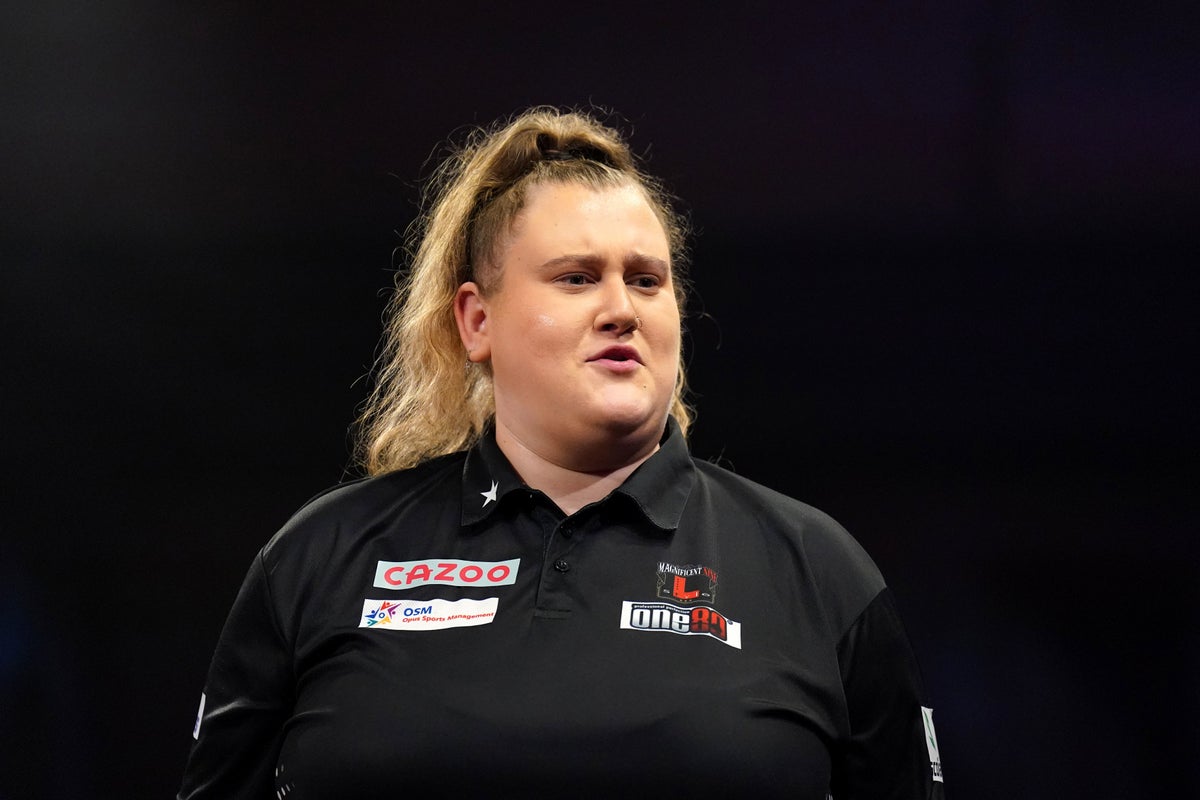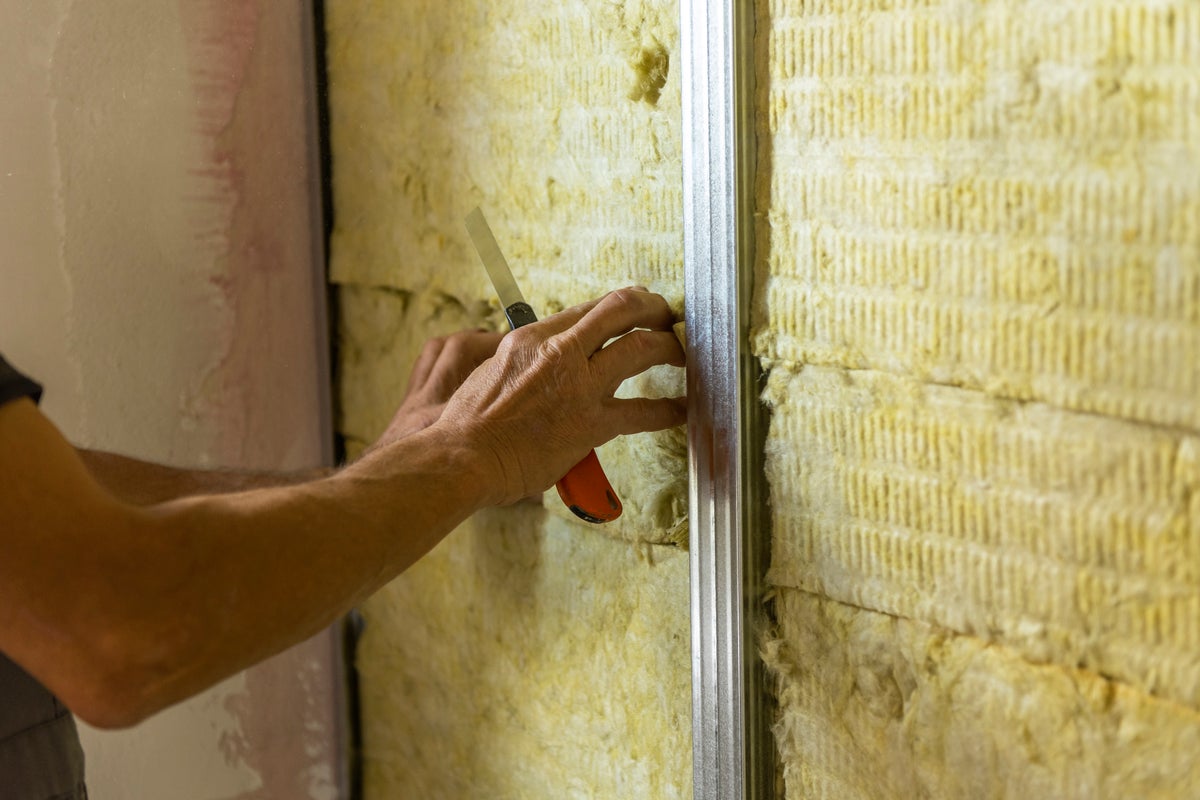With energy prices still high, many homeowners are asking the same question: are solar panels worth it? In most cases, the answer is yes, and more households than ever are opting to have solar panels installed.
By mid-August 2025, Britain’s solar electricity output had already surpassed the total for 2024, generating 14.43 billion kWh – enough to power more than five million homes. This surge reflects a 20 per cent rise in national solar capacity and the sunniest spring since records began. Domestic solar panel installations climbed by 22 per cent in the first half of 2025, with about 2 GWp (gigawatt-peak) of new solar capacity added – the fastest growth rate in a decade.
That momentum has attracted a wave of new manufacturers and installers to the UK market, making it harder for consumers to know which panels truly deliver on performance and value. To help you navigate the options, we’ve researched and tested the best solar panels for 2025, comparing power output, efficiency, degradation rates, aesthetics, and return on investment. We also analysed warranties, examined long-term data, and spoke directly with installers such as Glow Green and Solar4Good, as well as homeowners who shared what they wish they’d known before buying.
This updated guide brings all those insights together to help you choose a system that fits your budget and energy goals. Alongside our rankings, you’ll find a breakdown of the cost of solar panels in the UK today, plus expert advice to ensure your investment pays off for decades to come.
What are the best solar panels in the UK market?
- Best solar panel overall: DMEGC Infinity
- Best solar panel for longevity: SunPower Maxeon 7
- Best budget solar panel: REA Fusion R
- Best solar panel for efficiency: Perlight Black Grid
- Best solar panel for small roofs: Aiko Neostar
- Best solar panel for UK weather (low light): Jinko Tiger
Q
What's the difference between wattage and efficiency?
Q
What warranty and degradation should I look for?
Q
What is the typical payback period and ROI for solar panels in the UK?
Best solar panels at a glance
Panel | Price per kW, installed | Efficiency | Wattage per panel | Type | Made in | Degradation | Warranty |
DMEGC Infinity | £795 to £1,195 | 23 per cent | 440W to 460W | N-Type | China and Indonesia | 87.4 per cent after 30 years | 25 years |
SunPower Maxeon 7 | £1,250 | 24 per cent | 475W | N-Type | Malaysia and the Philippines | 90.8 per cent after 30 years | 40 years |
REA Fusion R Solar Panel | £700 to £820 | 23 per cent | 460W | N-Type | Australia | 90.3 per cent after 30 years | 25 years |
Perlight Black Grid | £895 to £1,195 | 26 per cent | 500W | N-Type | China | 87.4 per cent after 30 years | 30 years |
Aiko Neostar | £1,250 | 23 per cent | 460W | N-Type | China | 88.90 per cent after 30 years | 25 years |
Jinko Tiger | £1,250 | 22 per cent | 440W | N-Type | China, Malaysia, the US, and Vietnam | 87.4 per cent after 30 years | 25 years |
Best solar panel overall: DMEGC Infinity

- Price per kW, installed: £795 to £1,195
- Efficiency: 23 per cent
- Wattage per panel: 440W to 460W
- Type: N-Type
- Made in: China and Indonesia
- Degradation: 87.4 per cent after 30 years
- Warranty: 25 years product, 30 years degradation
- Dimensions: 1.76m x 1.13m x 0.03m
- Weight: 24.5kg
While it may be unfamiliar to some UK homeowners, DMEGC – part of the Hengdian Group – is a Tier-1 manufacturer (meaning it is financially stable and has proven production processes) and a major global player in clean energy, with the company aiming to be carbon neutral by 2050. As a Tier-1 manufacturer, buyers can have confidence that warranties will be honoured long term. This is an important factor to consider when you’re investing in panels that are expected to last 25-30 years.
DMEGC’s Infinity panel strikes an excellent balance between long-term performance, warranty coverage, and affordability, making it our top choice for most UK households. At 23 per cent, it may not boast the very highest efficiency (or degradation scores – 87.4 per cent after 30 years), but its overall combination of lower cost, solid performance, and proven manufacturer reliability makes it the best all-rounder.
Being able to trust in the longevity of a company that has been around as long as DMEGC, its skills in electrical manufacturing and as a Tier-1 solar manufacturer, gives us peace of mind that we are supplying our customers with quality.
Paul Evans, head of renewables at solar panel fitter Glow Green
The Infinity model provides a good compromise between power output and durability, offering more than 87 per cent of its initial output after three decades. Pricing is also competitive, coming in at the lower end of the market when installation is included. For many homeowners, this makes it one of the most cost-effective investments available.
Practical design touches include an anti-glare coating to prevent light reflection, which is useful if you live near roads or want to minimise visual impact. Like most premium solar panels, the Infinity also performs well in low-light conditions (important for gloomy UK winters) and at higher summer temperatures.
Pros:
- Affordable price point
- Long usable life with a solid degradation rate
- Trusted Tier-1 manufacturer with more than 40 years of experience
Cons:
- Efficiency is beaten by some rivals
- Degradation isn’t quite at the 90 per cent benchmark of premium brands
Why DMEGC Infinity is the best overall: It isn’t the single strongest performer in any one metric, but no other panel on the UK market combines such an attractive price, solid long-term reliability, and manufacturer pedigree. For the majority of households, it represents the best overall balance of cost and quality.
Read the full DMEGC Infinity solar panel review now
Best solar panel for longevity: SunPower Maxeon 7

- Price per kW, installed: About £1,250
- Efficiency: 24 per cent
- Wattage per panel: 475W
- Type: N-Type
- Made in: Malaysia and the Philippines
- Degradation: 90.8 per cent after 30 years
- Warranty: 40 years (product and performance, with registration and approved installer)
- Dimensions: 1.79m x 1.04m x 0.04m
- Weight: 21kg
If long-term peace of mind is your top priority, the SunPower Maxeon 7 stands out, with an industry-leading 40-year warranty and outstanding degradation performance. After three decades of use, it is said to still deliver more than 90 per cent of its original output, making it the most durable option on our list.
While more expensive than many competitors, the premium price tag is justified when you consider these panels should last significantly longer than standard solar panels. It particularly suits homeowners who want their investment to keep paying back well past the typical 25- to 30-year mark. The high efficiency and output per panel also make it a smart choice for smaller roofs (though you may prefer to opt for Aiko, also included in this article). The Maxeon 7 is also lighter than many rivals, which makes it easier to handle during installation and a good fit for a wider range of roof types.
For those seeking top-tier solar solutions, Maxeon Solar Technologies stands as a steadfast leader in the PV sector, backed by a dedicated network.
Stratford Energy
The SunPower brand has a long pedigree in solar, though it’s worth noting that Singapore-based Maxeon Solar Technologies has operated separately from its US parent company since 2020. Its biggest investors include China’s TCL Technology Group and France’s TotalEnergies. On the downside, Maxeon’s financial performance has been under strain since its split from SunPower. In 2024, it announced plans to sell its non-US business to its main shareholder. While this restructuring doesn’t undermine the product’s quality, it is something to be aware of, given the long warranty on offer.
Pros:
- Market-leading 40-year warranty
- Excellent degradation performance (more than 90 per cent after 30 years)
- High efficiency and strong per-panel output
Cons:
- Among the most expensive options
- The company is undergoing restructuring, raising financial questions
Why SunPower Maxeon 7 is best for longevity: With its 40-year guarantee and outstanding degradation rate, the SunPower Maxeon 7 offers unparalleled durability. While costly, it’s the best choice for homeowners who want a system they can trust to keep performing for decades, without compromise.
Read the full SunPower Maxeon 7 solar panel review
Best budget solar panel: REA Fusion R

- Price per kW, installed: £700 to £820
- Efficiency: 23 per cent
- Wattage per panel: 460W
- Type: N-Type
- Made in: Australia
- Degradation: 90.3 per cent after 30 years
- Warranty: 25 years product, 30 years degradation
- Dimensions: 1.72m x 1.13m x 3cm
- Weight: 24kg
For homeowners after strong performance at a lower price point, the REA Fusion R is the best budget solar panel. It comes in at one of the most affordable installed costs per kilowatt on the market, while still offering excellent long-term performance, retaining more than 90 per cent of its initial output after 30 years.
REA Power is a smaller Australian-based manufacturer, which makes it unusual in a list otherwise dominated by Chinese and multinational firms. Despite being a less familiar brand, REA has innovated with features that make its panels a strong value choice, particularly in the UK market.
One of its main advantages is the option to incorporate micro inverters on each panel. Unlike a centralised inverter, these can generate power even during low-light conditions, helping UK homeowners make the most of shorter winter days. Micro inverters also mean that if one panel develops an issue, the rest of the array isn’t affected.
REA Fusion panels combine advanced N-Type and HJT cell technologies, offering the best of both worlds: N-Type cells minimise long-term efficiency degradation, while HJT (Heterojunction Technology) enhances performance in low-light conditions. This powerful combination makes the Fusion 2 the go-to choice for the UK market, delivering maximum generation, even in our famously gloomy climate.
David Simmonds, Head of Solar at solar panel fitter Heatable
The Fusion R is also bifacial, meaning it can absorb sunlight from both the front and back. Some light passes through the panel and reflects off the roof surface, providing up to 20 per cent more energy generation.
Design-wise, the panels feature a minimalist all-black look, helping them blend discreetly into roofs. They also use separate cell zones, so shaded sections of a panel reduce output less dramatically than conventional designs.
Pros:
- Most affordable option in this group
- Has a 90 per cent power retention after 30 years
- Micro inverters improve low-light efficiency
- Bifacial design adds extra generation potential
Cons:
- Smaller brand with less name recognition
- Slightly lower efficiency than premium rivals
Why REA Fusion R is the best budget solar panel: With its low cost per kilowatt, strong degradation figures, and value-boosting features such as bifacial design and micro inverters, the REA Fusion R provides exceptional value for money. It’s the clear choice for households that want reliable solar power without paying a premium.
Read the full REA Fusion R solar panel review
Best solar panel for efficiency: Perlight Black Grid

- Price per kW, installed: £895 to £1,195
- Efficiency: 26 per cent
- Wattage per panel: 500W
- Type: N-Type
- Made in: China
- Degradation: 87.4 per cent after 30 years
- Warranty: 30 years on product and performance
- Dimensions: 1.76m x 1.13m x 0.03m
- Weight: 20.9kg
Founded in 2006, Perlight is a Chinese manufacturer that has grown rapidly by focusing on high-performance, high-efficiency panels. While not a Tier-1 brand, its longevity and global presence – shipping panels to more than 100 countries – means it’s a reliable option for UK buyers and a favourite among many of the best solar panel installers.
A 30-year product warranty is hard to come by in any product, but Perlight offers one of the longest warranties available in the market.
Paul Evans, head of renewables at solar panel fitter Glow Green
If squeezing the maximum amount of power out of your roof space is your priority, the Perlight Black Grid is our pick for best efficiency. By delivering more power per square metre, it’s especially suitable for smaller rooftops or households that want to maximise output without increasing their system size. It also offers a higher wattage than many rivals, which further boosts production.
Perlight backs this performance with a 30-year warranty, five years longer than most competitors. Combined with the panels’ high durability (including resistance to pressure, wind, and weather damage), homeowners can have added confidence in the system’s lifespan.
The downside is its degradation rate, which sits at 87.4 per cent after 30 years. While still respectable, this trails behind leaders such as SunPower and REA, both of which retain more than 90 per cent.
Pros:
- Class-leading efficiency (26 per cent)
- High power output (500W per panel)
- Long 30-year warranty
- Competitive price compared with other high-performance panels
Cons:
- Degradation is weaker than its rivals
- Not a Tier-1 manufacturer, though established globally
Why Perlight Black Grid is best for efficiency: It enables homeowners to generate the maximum energy possible from their roof, even if they’re short on space.
Read the full Perlight Black Grid solar panel review
Best solar panel for small roofs: Aiko Neostar
.jpeg)
- Price per kW, installed: About £1,250
- Efficiency: 23 per cent
- Wattage per panel: 460W
- Type: N-Type
- Made in: China
- Degradation: 88.9 per cent after 30 years
- Warranty: 25 years product, 30 years degradation
- Dimensions: 1.76m x 1.13m x 0.03m
- Weight: 21.5kg
Founded in 2009, Aiko is one of China’s biggest solar manufacturers and a recognised Tier-1 company. It operates six plants in China as well as a research hub in Germany, and has shipped more than 150GW of panels globally.
In terms of its panels, we’d recommend Aiko’s Neostar if you’re looking for solar panels for a small roof. These panels deliver the best combination of compact design and high power density – each panel produces 460W at 23 per cent efficiency while maintaining a relatively light and slim build. The panels also boast excellent durability, retaining almost 89 per cent of its output after 30 years.
With new generation All Back Contact (ABC) technology, Aiko Neostar panels supply excellent efficiency, and their entirely black design is aesthetically pleasing and looks great on any rooftop. They represent a premium option built for homeowners in search of the latest in tech and the best performance from a small-scale system.
Edward McKay, fitter at Solar4Good
The panels also feature cell-level partial shade optimisation, which improves energy yield even when parts of the array are shaded. This means a consistent output will be delivered, despite changing skylines or nearby trees.
Durability is another strength. Aiko highlights its micro-crack resistance technology, ensuring panels withstand impacts from hail, branches, or debris. This robustness, coupled with its sleek all-black aesthetic, makes the Neostar both practical and visually appealing.
At just 21.5kg, it’s lighter than many rivals, which reduces strain on roofs and simplifies installation – another advantage for smaller properties.
Pros:
- High power density – ideal for limited roof space
- Nearly 90 per cent output retention after 30 years
- Lightweight and slim design
- Premium all-black finish
Cons:
- More expensive than some competitors
- Efficiency slightly lower than Perlight Black Grid
Why Aiko Neostar is best for small roofs: With strong per-panel output, lightweight construction, and shade optimisation, the Aiko Neostar is the best choice for homes with limited space. It helps smaller rooftops achieve big solar gains without compromising on quality or longevity.
Read the full Aiko Neostar solar panel review now
Best solar panel for UK weather (low light): Jinko Tiger
.jpeg)
- Price per kW, installed: About £1,250
- Efficiency: 22 per cent
- Wattage per panel: 440W
- Type: N-Type
- Made in: China, Malaysia, the US, Vietnam
- Degradation: 87.4 per cent after 30 years
- Warranty: 25 years product, 30 years degradation
- Dimensions: 1.76m x 1.13m x 0.03m
- Weight: 22kg
Founded in 2006, Jinko Solar has become one of the world’s largest solar manufacturers, and it’s part of the Solar Module Super League, a group of seven firms accounting for roughly half of global production capacity. As a Tier-1 manufacturer listed on the New York Stock Exchange, it has the financial strength and transparency to back its warranties. Jinko is also heavily invested in global solar projects, including holding a 20 per cent stake in a 2GW solar farm in the UAE – one of the largest in the world. This scale provides further reassurance to buyers that the company will be around to honour its commitments.
Jinko Tiger panels deliver reliability and performance with robustness and high energy output in weak light conditions. They’re a great choice for customers who want quality, affordability, and performance from one of the best solar manufacturers in the world.
Edward McKay, fitter at Solar4Good
The key differentiator of the Tiger series is the output in weak light. The panels have an advanced N-type cell construction to maintain higher energy output even under weak sunlight, whether early morning, evening, or cloudy UK days, ensuring steadier performance throughout the year. So, for the UK’s famously overcast skies and shorter winter days, the Jinko Tiger is the standout choice. N-type cells are also slower to degrade and are resistant to salt corrosion, making them a great pick for coastal properties.
These panels are also mid-weight and relatively small compared with some other options, making them a practical fit for most UK rooftops.
Pros:
- Excellent performance in low-light conditions
- Backed by one of the world’s biggest solar manufacturers
- Strong warranties and solid durability features
Cons:
- Efficiency trails leaders such as Perlight
- Degradation is average compared with premium brands
Why Jinko Tiger is best for UK weather: With its emphasis on low-light performance and proven global reliability, the Jinko Tiger is the most dependable option for homeowners who want to generate energy in Britain’s cloudy climate.
Read the full Jinko Tiger solar panel review
How to choose the best solar panels for your home
Price and brand reputation aren’t the only things to consider when investing in solar panels. Here are some of the key factors to keep in mind when comparing your options:
- Efficiency: this measures how much sunlight a panel can convert into usable electricity. Higher-efficiency panels take up less space for the same energy output, which can be important if your roof area is limited.
- Power output: look for the wattage rating (eg, 400W or 500W per panel). The higher the output, the fewer panels you may need to meet your household’s energy demand.
- Warranty: most manufacturers offer two types of warranty – a product warranty (covering defects and build quality) and a performance warranty (guaranteeing a certain level of output after 20–25 years). Strong warranties can be a good indicator of panel reliability.
- Cost factors: beyond the panels themselves, installation costs, scaffolding, and inverters all affect the final bill. Comparing quotes from several installers can help you get the best value.
- Sustainability: some manufacturers emphasise low-carbon production methods or recyclability. If environmental impact is a priority, it’s worth asking installers about panel sourcing and end-of-life recycling options.
Adding these considerations to your checklist will help ensure you’re not just buying the cheapest panels, but the ones best suited to your home and long-term energy goals.
Your questions on the best solar panels, answered
What is the best solar panel in the UK?
With dozens of models on the market, the best solar panel often comes down to your priorities. Our top pick is the DMEGC Infinity, thanks to its balance of cost and durability. For longevity, we would recommend the SunPower Maxeon 7, while the REA Fusion R is ideal for households on a tighter budget. The Perlight Black Grid is unbeatable for efficiency, Aiko Neostar shines for smaller roofs, and the Jinko Tiger is built for the UK’s cloudy climate.
Before committing, always compare quotes from multiple installers, check they’re MCS-certified, and confirm warranty terms. The right system should last for decades, so it’s worth investing the time up front.
How long do solar panels last?
Most modern solar panels are built to last 25–30 years and come with performance guarantees ensuring they’ll still generate about 80 per cent of their original output at the end of that period. The panels themselves rarely fail, but inverters usually need replacing after 10–15 years. With regular cleaning and monitoring, many systems continue producing efficiently well beyond the warranty period.
What are the most efficient solar panels in the UK?
The most efficient solar panels available to UK homeowners in 2025 reach efficiencies of up to 26 per cent, such as the Perlight Black Grid. High-efficiency panels like these are especially valuable if your roof space is limited, since they generate more power per square metre. Other top performers include the SunPower Maxeon 7 (24 per cent) and Aiko Neostar (23 per cent).
What size solar panel system do I need for my home?
The right system size depends on your household energy use and roof space. A typical UK home uses 2,900–4,300 kWh of electricity a year, which usually translates to a 3kWp to 5kWp solar system (roughly 8-12 panels). If you drive an EV or use electricity for heating and hot water, a larger system with battery storage may be worthwhile. An MCS-certified installer can size the system accurately, based on your meter data and roof survey.
Are solar panels recyclable?
Yes – about 95 per cent of a solar panel’s materials, including aluminium, glass, and silicon, can be recycled. In the UK, recycling is overseen by schemes such as PV CYCLE, and many manufacturers, including REA, are part of take-back or refurbishment programmes to keep old panels out of landfills.
Do brands matter when choosing panels?
Yes – established Tier-1 manufacturers (such as DMEGC, Jinko, SunPower/Maxeon, and Aiko) are financially stable and more likely to honour 25- to 40-year warranties. While smaller brands can also offer good performance, choosing a reputable manufacturer with a long track record provides extra peace of mind when investing in panels that should last three decades or more.
What solar panel incentives exist in 2025?
The government currently offers a zero VAT rate on domestic solar installations until at least 2027, cutting upfront costs by 20 per cent. You can also earn money through the Smart Export Guarantee (SEG), which pays you for excess electricity you send to the grid. Some local councils and energy providers run additional schemes, so it’s worth checking regional offers before installation. For more on this, see our guide to the top solar panel grants and funding options.
Can solar panels really save me money?
Yes, but savings depend on your energy use, roof suitability and system size. Most UK households can cut electricity bills by 50–70 per cent through self-consumption alone, and even more with battery storage. Combined with export payments under the Smart Export Guarantee (SEG), many homeowners recover installation costs within 8–12 years, sometimes faster when electricity prices are high.
Do solar panels increase home value?
Research suggests homes with solar panels often sell for more and attract faster offers, particularly when the system is owned outright and has long warranty coverage. Buyers value reduced energy bills and the environmental benefits of a ready-made renewable energy system. While exact figures vary, solar panels can make a property more appealing in an energy-conscious market.
Do solar panels work on cloudy days?
Yes – while solar panels generate the most electricity in direct sunlight, they still produce power on cloudy or overcast days. Output can drop by 10–25 per cent, depending on cloud thickness, but overall annual generation already factors in the UK’s mixed weather. Good system design – including optimal roof orientation and minimal shading – helps maintain consistent performance year-round.
How we chose the best solar panels in the UK
Choosing the best solar panels that UK homeowners can trust means balancing technical performance with real-world experience. To create this guide, we developed a clear scoring system and combined it with expert insight and real consumer feedback.
Every solar panel was rated across five core factors, each on a simple scale of one to five:
- Efficiency: How much sunlight is converted into electricity, including performance during low light.
- Cost: Average installed price per kilowatt, factoring in UK market rates.
- Wattage per panel: Power density (important for small roofs where space is limited).
- Warranty: Coverage length for both product and performance guarantees.
- Degradation: How much output the panel retains after 25-30 years of use.
Each factor was given equal weight to produce an aggregate score out of 25. Panels that scored consistently high across multiple categories were ranked more favourably than those that excelled in just one area.
Panel | Efficiency | Cost | Wattage | Warranty | Degradation | Total (out of 25) |
DMEGC Infinity | 3 | 4 | 4 | 3 | 3 | 17 |
SunPower Maxeon 7 | 4 | 2 | 5 | 5 | 5 | 21 |
REA Fusion R | 3 | 5 | 4 | 3 | 5 | 20 |
Perlight Black Grid | 5 | 3 | 5 | 4 | 3 | 20 |
Aiko Neostar | 3 | 2 | 4 | 3 | 4 | 16 |
Jinko Tiger | 2 | 2 | 2 | 3 | 3 | 12 |
What the scores show
- SunPower Maxeon 7 leads overall with 21 out of 25, thanks to its unmatched 40-year warranty and strong efficiency/degradation scores, though its high price hurts its accessibility. Ultimately, as Lloyd Greenfield from Glow Green pointed out in our interview below, the number one criterion for most consumers is cost, so we had to bear that in mind when choosing the overall best solar panel.
- REA Fusion R and Perlight Black Grid both score 20, representing excellent value – REA for affordability and degradation, Perlight for efficiency and warranty. However, each excels in specific areas rather than across the board, which is why neither is best overall.
- DMEGC Infinity lands at 17 out of 25, but is considered the best overall because it offers the strongest balance of performance, durability, and affordability across all factors, making it the most versatile choice for the widest range of households.
- Aiko Neostar scores 16, lower overall but uniquely strong for small roofs due to its per-panel output.
- Jinko Tiger has the lowest aggregate score at 12 out of 25 but still earns its category win for UK weather because of its superior low-light performance (a factor not fully captured in the scoring table).
Additional methodology
Numbers only tell part of the story. By combining technical specifications, expert recommendations, and consumer sentiment, our methodology ensures that this guide reflects both the science of solar panels and the lived experience of UK homeowners.
The consumer experience
To get a thorough understanding of the best solar panels, we also looked at customer satisfaction through Trustpilot reviews, Google reviews, and independent forums. We also spoke directly to consumers who have purchased solar panels. This feedback helped us understand how different solar panel brands and installers perform when it comes to reliability, service, and post-installation support.
One consumer we spoke with was Justin Webb, a graphic designer and founder of Judmedia. He had solar panels installed more than two years ago. When choosing, he prioritised a clear like‑for‑like kit spec (panels, inverter, battery), long warranties with an MCS‑accredited installer who did an in‑person survey, and a simple single‑brand ecosystem so everything works well together.
While cost was a major consideration for him, he says consumers shouldn’t be too concerned about the return on investment (ROI) in solar. “People always talk about ROI with solar panels, but often forget that there’s no ROI on paying your energy bill, or your gas bill, or your mortgage. You just pay it and it’s gone,” he says. “With solar, I’m fixing my energy price instead. There are so many variables in life that you can’t fix, but energy is one of them. Solar allowed me to fix that cost and future-proof myself against energy price rises.”
And while we’re all concerned about costs, Webb offered the following considerations:
- Quotes vary widely. Webb’s quotes ranged from £11k to £18k, with scaffolding being a surprisingly big chunk.
- Finance options exist. Some mortgage lenders offer 0 per cent loans for solar upgrades, which is worth asking about during a remortgage or a move.
- Summer exports cover standing charges. During sunny months, he often has no bill, as his exports offset the standing charge.
- Home resale. He believes solar can add value (he cites an approximate £10k uplift, from what he’s seen), though exact figures vary by market.
Finally, he suggests not forgetting the basics. Do an energy mini‑audit before you choose your solar panels. Before purchasing panels, he switched all of his lights to LEDs, calculated what his fridge and oven actually draw. The goal, he says, is to reduce waste so that your solar and battery combination can go further and save you the maximum amount of money.
The expert insight
We interviewed leading solar installers, including Glow Green and Solar4Good, and considered guidance from industry bodies such as the Microgeneration Certification Scheme (MCS) and the Energy Saving Trust. These conversations highlighted the importance of installer reputation, aftercare, and real-world durability.
According to Lloyd Greenfield, founder of Glow Green, which sits in our guide to the best solar panel installers, the three factors that should top every homeowner’s checklist are warranty, manufacturer reputation, and cell technology. “There’s a big difference between a panel guaranteed for 30 years and one that only lasts 15,” he says. “You also want a manufacturer with a strong track record, not a new entrant whose panels haven’t been tested in the UK over decades.”
Greenfield warns against focusing solely on price or raw efficiency figures. Many households are quoted for lower-wattage panels to bring down upfront costs, but that can backfire. “If you can get 515W panels instead of 450W in the same roof space, you’ll generate more power and better long-term payback,” he explained. Spending a little more upfront, he argues, often means greater savings over the system’s lifetime.
The choice of installer is just as important as the panel itself. Greenfield advises looking for MCS and NIC accreditations and whether the company uses the Energy Performance Validation Scheme (EPVS). “It’s almost like an insurance policy,” he says. “They check the installer’s design assumptions – things like shading, pitch, and orientation – to make sure the numbers are realistic.” He also recommends checking Trustpilot ratings, years in business, and whether deposits are protected under an insurance-backed scheme.
A big trend in the market, he added, is pairing your array with a battery. Greenfield says that almost every customer now chooses battery storage, with more than 95 per cent of Glow Green’s clients opting for a battery and around 10 per cent coming back within a year to add a second. Falling panel prices and smarter tariffs are making storage even more attractive.
And while Greenfield admits some bias, his personal recommendation is Perlight’s Black Grid panel, thanks to its sleek all-black design, 30-year warranty, bifacial technology, and strong reputation. “In our view, it’s one of the best solar panels in the UK market,” he said.
For more details, see our guides:
Why you can trust The Independent’s solar panel coverage
The Independent has been reporting on green energy and climate matters since it was founded in 1986. Since then, we have written hundreds of reviews and news stories on energy matters, including the best solar installers and various other guides on green power. Howard Mustoe is The Independent’s energy editor. He has written extensively on everything from how you can earn money from solar panels to a guide on whether solar panels are actually worth it. His experience is why you can trust his verdict on the best solar panels. Howard has conducted extensive research, including consulting industry experts and customers, to gain a thorough understanding of which brands are making the best solar panels.
What happens when you get a quote through us
After you have filled out our form above, you will receive three quotes from solar fitting companies local to you. They may be able to quote based on the information you have given them, or they may need more information, or to visit your home. Once you have these quotes, you can decide if you wish to proceed.

.jpeg)






















.jpeg)












 English (US) ·
English (US) ·